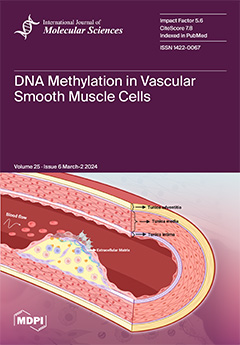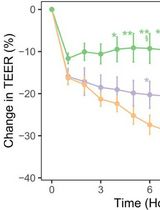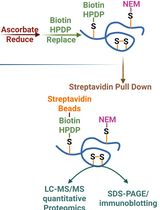- EN - English
- CN - 中文
HS–GC–MS Method for the Diagnosis of IBD Dynamics in a Model of DSS-Induced Colitis
HS-GC-MS 方法用于 DSS 诱导性结肠炎模型中 IBD 动态变化的诊断
(*contributed equally to this work) 发布: 2025年03月20日第15卷第6期 DOI: 10.21769/BioProtoc.5246 浏览次数: 2833
评审: Marco Di GioiaElke M. MuntjewerffAnonymous reviewer(s)

相关实验方案
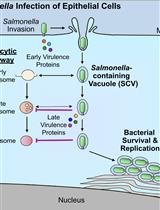
细菌病原体介导的宿主向溶酶体运输的抑制:基于荧光显微镜的DQ-Red BSA分析
Mădălina Mocăniță [...] Vanessa M. D'Costa
2024年03月05日 2685 阅读
Abstract
Inflammatory bowel disease (IBD) is highly prevalent globally and, in the majority of cases, remains asymptomatic during its initial stages. The gastrointestinal microbiota secretes volatile organic compounds (VOCs), and their composition alters in IBD. The examination of VOCs could prove beneficial in complementing diagnostic techniques to facilitate the early identification of IBD risk. In this protocol, a model of sodium dextran sulfate (DSS)-induced colitis in rats was successfully implemented for the non-invasive metabolomic assessment of different stages of inflammation. Headspace–gas chromatography–mass spectrometry (HS–GC–MS) was used as a non-invasive method for inflammation assessment at early and remission stages. The disease activity index (DAI) and histological method were employed to assess intestinal inflammation. The HS–GC–MS method demonstrated high sensitivity to intestine inflammation, confirmed by DAI and histology assay, in the acute and remission stages, identifying changes in the relative content of VOCs in stools. HS–GC–MS may be a useful and non-invasive method for IBD diagnostics and therapy effectiveness control.
Key features
• Experiments performed in vivo to better control DSS-induced colon damage and to aid the study of IBD development in humans.
• Optimized for the following organisms: Wistar rats and C57BL/6 mice.
• An easily assessed disease activity index (DAI) (weight loss, stool consistency, degree of fecal occult blood) and histopathological examination are suggested for additional IBD confirmation.
• Enables VOC testing with relatively small stool samples.
Keywords: Headspace–gas chromatography–mass spectrometry (HS–GC–MS) (顶空-气相色谱质谱联用仪(HS-GC-MS))Graphical overview
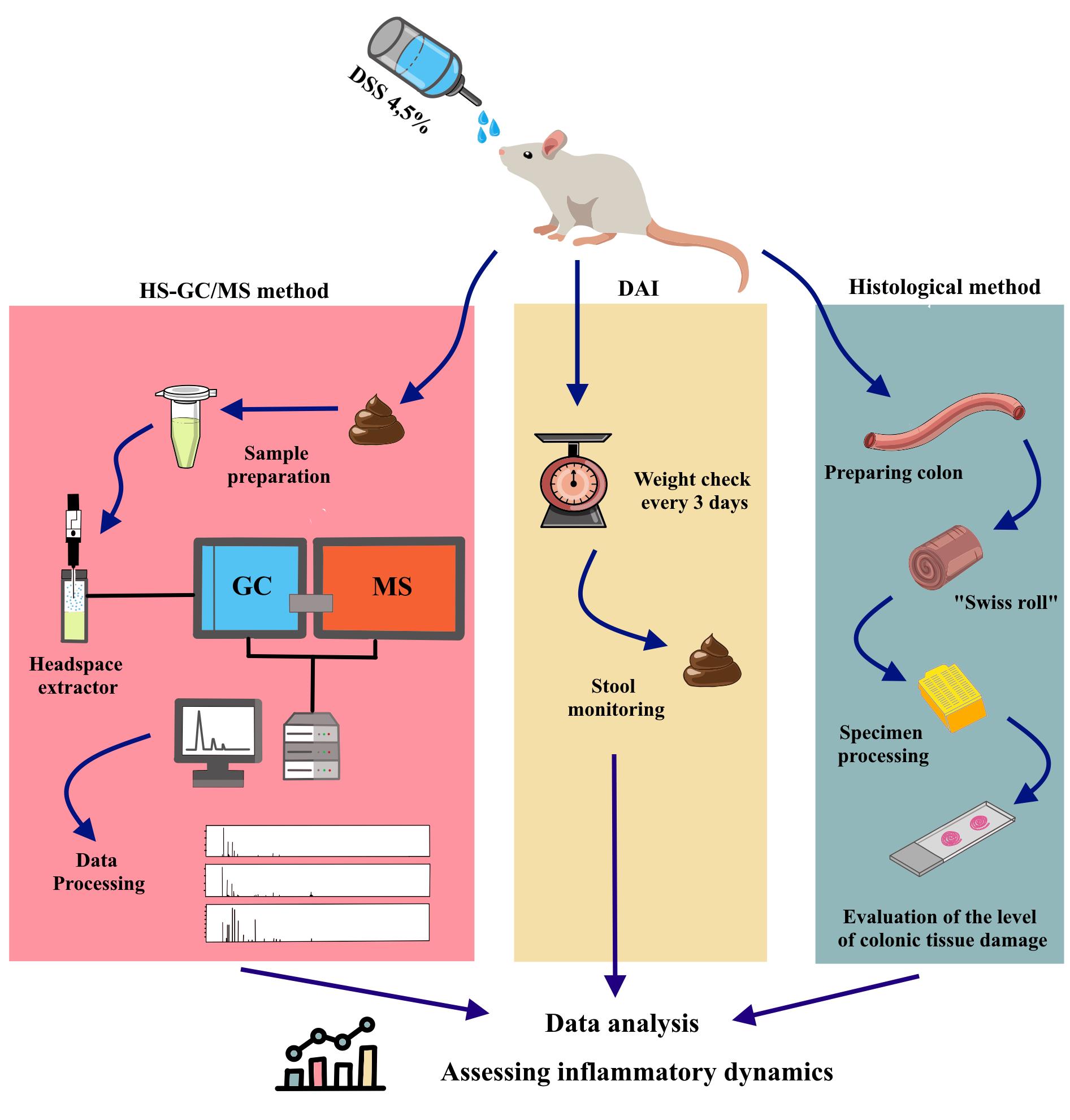
Background
Inflammatory bowel diseases (IBD) are a significant challenge in gastroenterology [1]. Diagnosing these diseases is difficult, and reliable early diagnosis is still a challenge. Severe IBD symptoms such as bloody diarrhea can debilitate or even lead to death. IBD diagnostic techniques can also cause complications (functional impairment, pain reactions, and bacterial infections) [2]. It is therefore vital to identify alternative, safe, and rapid molecular methods of diagnosis and treatment.
Microorganisms secrete volatile organic compounds (VOCs), including short-chain fatty acids, that constitute the principal metabolites of the microbiota in the colon [3,4]. In particular, acetic, propionic, and butyric acids produced by the microbiota account for 90%–95% of VOCs in the colon (ratio 3:1:1) [5]. Other volatile metabolites include medium- and long-chain fatty acids or amino acid derivatives. The ratio of VOC components in samples is correlated with the stage of intestinal inflammation [6,7]. Fecal VOC analysis represents a non-invasive diagnostic method for differentiating IBD, including ulcerative colitis (UC) and Crohn's disease (CD). Some studies have demonstrated that specific VOCs are elevated in patients with active CD, with concentrations returning to normal levels following treatment. The analysis of VOCs is conducted through the use of gas chromatography combined with mass spectrometry (GC–MS) [8,9]. This method enables the comparison of biological samples, including fecal, through the use of the vapor-phase extraction technique [10]. The use of experimental animal models enables the efficacy of the method to be demonstrated at various stages of the inflammatory process.
The most accurate models for IBD research include trinitrobenzene sulfonic acid (TNBS), oxazolone, and sodium dextran sulfate (DSS) treatment. The TNBS model induces colitis as a consequence of a Th1-mediated immune response, whereas oxazolone induces colitis with a Th2-type cytokine response. The DSS model is the most commonly used for modeling colitis in rodents, facilitating the study of innate immunity and healing processes [1,11–15]. However, DSS has been demonstrated to cause damage to the colonic epithelium and to alter the intestinal microbiota and its metabolites [16,17]. It has been suggested that shifts in the microbiota with subsequent changes in metabolites are a consequence of the formation of colitis [18].
In this study, we pursued the goal of establishing a protocol for the analysis of acute and remission stages of intestine inflammation using the HS–GC–MS method. The approach was demonstrated in DSS-induced colitis in rats. Intestinal inflammation was confirmed by histological examination and evaluation of a disease activity index.
Materials and reagents
The following materials and equipment are recommended for this protocol, but alternatives from other sources can also be used when proven to be equivalent.
Biological materials
In the experiment, we used female, 2-month-old Wistar rats (200–230 g). You can also use 2-month-old male Wistar rats.
Note: This protocol can also be used for C57BL/6 male and female mice (20–25 g) but with a lower concentration of DSS (3%).
Reagents
1. Food and water for rats (Laboratorcorm, lot not available)
2. Dextran sulfate sodium salt (DSS), MW ca. 40,000, powder (Alfa Aesar, catalog number: 61701051)
3. Potassium dihydrogen orthophosphate (CDH, catalog number: 821123)
4. Ammonium sulfate (NeoFroxx Gmbh 1333KG001, catalog number: 62E1113f)
5. Ultra-high purity helium (99.9999%)
6. Paraffin wax Histomix Extra (BioVitrum, catalog number: 10342)
7. Hematoxylin (BioVitrum, catalog number: 05-002/М)
8. Eosin (BioVitrum, catalog number: 05-011)
9. Histological mounting medium Vitrogel (BioVitrum, catalog number: HM-VI-A250)
10. 10% buffered formalin, pH 7.0–7.8 (BioVitrum, catalog number: B06-001/M)
11. Isopropyl alcohol (Chimmed, catalog number: 00000006997)
12. O-xylene (Chimmed, catalog number: 95662-2.5L)
13. Phosphate-buffered saline (PBS) (VWR International LLC, catalog number: 18G2056770)
Solutions
1. Liquid 4.5% DSS (see Recipes)
2. Liquid PBS (see Recipes)
Recipes
1. Liquid 4.5% DSS
Dissolve 4.5 g of DSS powder in 100 mL of water
2. Liquid PBS
Add one tablet in 100 mL of distilled water
Laboratory supplies
1. Stool collection tubes (1.5 mL Eppendorf)
2. Euthanasia equipment: Guillotine, chloroform
3. Surgical instruments:
a. Scissors pointed straight 165 mm (Dealmed, catalog number: J-22-022)
b. Anatomical forceps 250 mm (Dealmed, catalog number: J-16-026)
c. Surgical forceps 200 mm (Dealmed, catalog number: J-16-034)
d. Anatomical forceps, curved (Dealmed, catalog number: 37-614)
e. Straight pointed anatomical forceps (Dealmed, catalog number: 12-560-00-07)
f. Microsurgical scissors (Dealmed, catalog number: MS-1204)
g. Eye scissors for suture removal (Dealmed, catalog number: J-22-180A)
4. Sewing thread
5. Toothpicks
6. Pipettes (20, 200, and 1,000 μL) (Gilson, catalog number: F167300)
7. Microtome blades R35, Japan (Feather, catalog number: 253740)
8. Labeled histological cassettes (BioVitrum, catalog number: Kg-07)
9. 10 mL clear headspace screw vials (Gluvex D22.5xH50 p/n SLV 101M, catalog number: 201250800)
10. Screw magnetic cap and septa match with SLV 101M (Gluvex SLV10/20SCM, catalog number: 211225213)
Equipment
1. Rat cages and drinkers 545 mm × 395 mm × 200 mm (Laboratorcorm, catalog number: Т-4\1)
2. Scales
3. Gas chromatography–mass spectrometry (GC–MS) system (Shimadzu, model: GCMS-QP2010) with a headspace (HS) extractor (Shimadzu, model: HS-20)
4. VFWAX MS column with 30 m length, 0.25 mm diameter, and 0.25 μm phase thickness (Agilent technologies, catalog number: CP9205)
5. Rotary microtome (Thermo Scientific, model: Thermo HM 340E)
6. Slice transfer system (Thermo, model: STS)
7. Light microscopy (Zeiss, model: Primo Star)
8. Histological embedding workstation (Thermo Fisher Scientific, model: HistoStar 12587976)
Software and datasets
1. GCMS solution (version 2.45, Shimadzu Corporation)
2. NIST 14 mass spectral libraries (National Institute of Standards and Technology http://www.nist.gov/) with automated mass spectral deconvolution and identification system (AMDIS version 2.72)
Procedure
文章信息
稿件历史记录
提交日期: Dec 4, 2024
接收日期: Feb 7, 2025
在线发布日期: Mar 5, 2025
出版日期: Mar 20, 2025
版权信息
© 2025 The Author(s); This is an open access article under the CC BY-NC license (https://creativecommons.org/licenses/by-nc/4.0/).
如何引用
Shagaleeva, O. Yu., Kashatnikova, D. A., Kardonsky, D. A., Efimov, B. A., Ivanov, V. A., Smirnova, S. V., Zorkina, Y. A., Vorobjeva, E. A., Silantiev, A. S., Kazakova, V. D., Kolesnikova, I. V., Markelova, M. I., Vanyushkina, A. A., Chaplin, A. V., Grigoryeva, T. V. and Zakharzhevskaya, N. B. (2025). HS–GC–MS Method for the Diagnosis of IBD Dynamics in a Model of DSS-Induced Colitis. Bio-protocol 15(6): e5246. DOI: 10.21769/BioProtoc.5246.
分类
微生物学 > 微生物-宿主相互作用 > 细菌
生物科学 > 生物技术 > 质谱
医学 > 发炎
您对这篇实验方法有问题吗?
在此处发布您的问题,我们将邀请本文作者来回答。同时,我们会将您的问题发布到Bio-protocol Exchange,以便寻求社区成员的帮助。
提问指南
+ 问题描述
写下详细的问题描述,包括所有有助于他人回答您问题的信息(例如实验过程、条件和相关图像等)。
Share
Bluesky
X
Copy link


